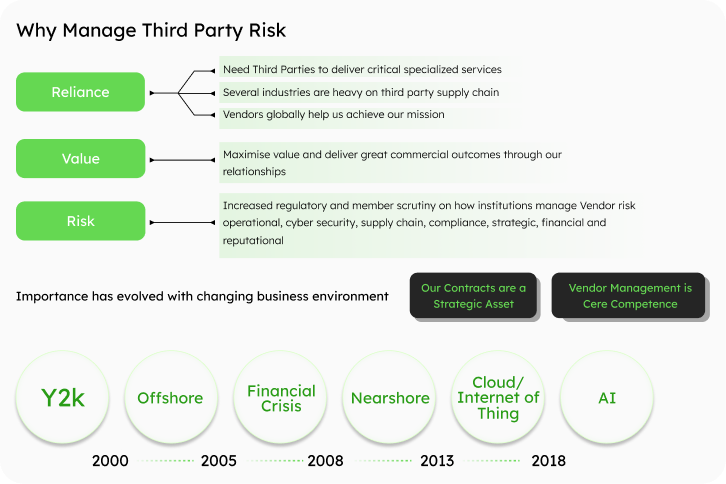Why Manage Third Party Risks?


Implementing a risk-based approach for assessing third parties can allow businesses to decrease the number of control assessments they must perform.

A data breach, phishing, DDoS, social engineering or ransomware attack from a third party can cost your organization in time and resources, halt or disrupt operations and significantly impact its reputation.
If a third party provides a critical component of your system and is disrupted due to a natural disaster, political conflict or cybersecurity attack, it also poses a critical risk to your business continuity.
If a supply chain is poorly managed, it can result in financial risk to a third party as they are unable to properly evaluate which products they offer are in high demand and which are not.
Market changes, new acquisitions or mergers, and changing expectations of customers can make it difficult for all parties in the supply chain to align on business strategy.
Compliance requirements depend on the industry (e.g. HIPAA and PCI DSS), your company’s location, and your customer’s location (e.g. GDPA, CCPA, EBA).
For example, political tensions can make it difficult to continue a business relationship with a supplier or vendor. Political instability can motivate companies to look for a vendor in another location.